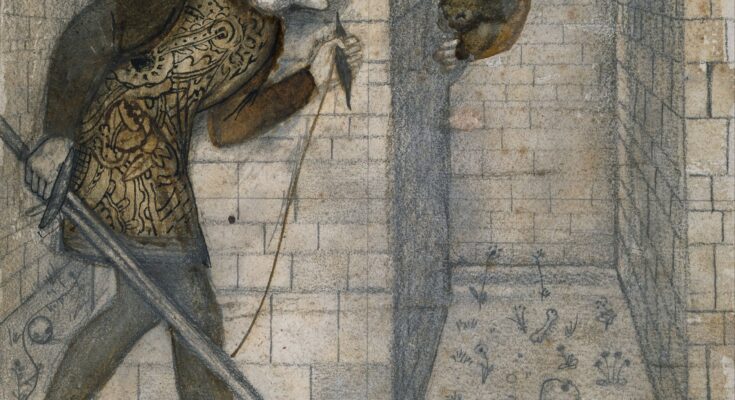According to Greek mythology, King Minos of Crete had an incredible Labyrinth at Knossos. He would place unlucky victims in the Labyrinth to be killed by the Minotaur. This was a half-man, half-bull monster. Although this might seem entirely unrealistic, there is evidence that the origin of this myth may well be related to the Minoan civilization of history.
The Minoans at Knossos
Throughout most of the Bronze Age, the Minoans were the rulers of Crete. Over the course of their civilization, they gradually built up an incredible palace complex at Knossos. This was the most powerful city on the island.
The palace complex at Knossos served temple functions and was an administrative center. There was a central court surrounded by many dozens of rooms and auxiliary buildings.
The entire structure is incredibly complex. When archaeologists first excavated it, Sir Arthur Evans observed that it was labyrinthine. It was a maze of rooms in which one could very easily get lost.
Since, according to the ancient Greeks, there was a large Labyrinth at Knossos, could this be a distorted memory of the ancient palace complex? The structure itself lends credence to this idea. However, there is more evidence in its favor than merely this.
Bull fighting in the Minoan Labyrinth
The ancient Greeks believed that a Minotaur lived in the Labyrinth, and that this was what killed those who were forced inside. Can the Minoan palace complex at Knossos explain this part of the legend?
Interestingly enough, archaeologists have uncovered evidence that a form of bull fighting took place in the palace complex. For example, Minoan frescoes famously show scenes of bull leaping.
This seems to have occurred within the Central Court of the palace complex. Interestingly, there is evidence of bull sacrifices in crypts off to the side of the court. This suggests that the bulls used in bull leaping were likely captured by performers. Then, they were taken to be sacrificed.
True, this form of bull fighting was likely not as violent on the part of the performers as other types, such as in today’s world. However, the bull would probably not have appreciated the difference.
Therefore, those who were placed in the central court were evidently at risk of being killed by these bulls. Accidents inevitably would have happened, and people would have gotten killed.
Issues with the Minoan explanation of the Labyrinth
With the above evidence in mind, we can make a reasonable case for interpreting the story of the Minotaur in the Labyrinth as a distorted memory of the bull fighting that occurred in the palace complex of Knossos.
However, this explanation is not without its issues. For one thing, the large palace complex of Knossos was thoroughly occupied. This is very different to the Labyrinth of Greek myth, which was essentially empty, aside from the Minotaur and its victims.
Furthermore, the era in which King Minos himself supposedly lived was long after the end of Minoan rule over Crete. Their rule came to an end in the fifteenth century BCE, when the Mycenaean Greeks conquered the island.
In fact, when we consider the fact that Minos’ enemy was famously Theseus, the hero who unified Attica, archaeology makes it clear that he would have lived in the eighth century BCE. This is evident both from the archaeology of Attica and also from that of the Cyclades. They were said to have prospered during the reign of Minos.
The Labyrinth after the Minoan civilization
If King Minos was a king of the eighth century BCE, then how does this tie in to the facts surrounding the palace complex of Knossos?
The first important observation is that the area was definitely occupied at the time. This is what we should expect since Minos supposedly lived at Knossos. Archaeological evidence shows that the settlement began to grow again in the ninth century BCE. The settlement in the Early Iron Age appears to have covered some 40 hectares at the very least.
Notably, the main palace complex and its central court were not reoccupied. This is significant. This means that by the eighth century BCE, there was a substantial settlement at Knossos, just next to which stood the ruins of this enormous labyrinthine structure.
This is far more similar to the legend of Minos and the Labyrinth than the way things were in the Minoan era, during which the palace complex itself was heavily inhabited.
Furthermore, archaeological evidence from the eighth century BCE demonstrates there was religious activity going on in the palace complex, including in the central court. It was not abandoned entirely. Rather, it appears to have been viewed as a sacred area.
Therefore, the evidence from the eighth century BCE, the expected era of King Minos, is entirely consistent with the basic legend of the Labyrinth.



